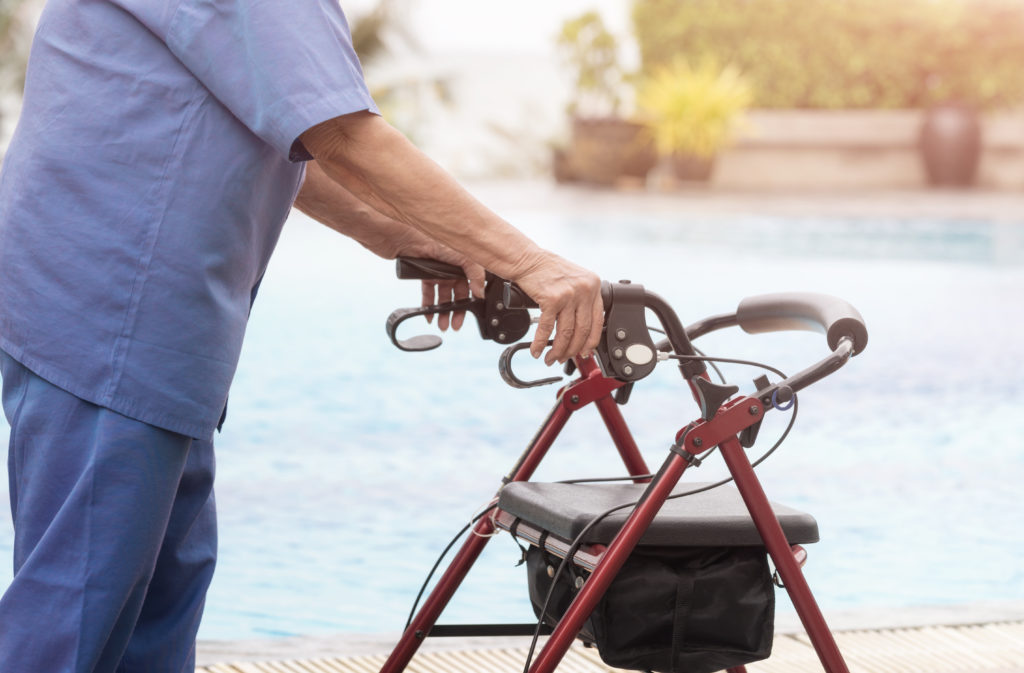When providing comfort and quality of life to patients during their end-of-life journey, the right equipment plays a crucial role. In this blog, we’ll delve into the world of hospice DME, also known as hospice durable medical equipment.
Everything You Need to Know About Hospice DME
Whether you’re a caregiver, healthcare professional, or someone seeking knowledge about this essential aspect of hospice care, this guide will provide the information you need to make informed decisions and provide optimal support.
What Is Hospice Durable Medical Equipment?
Hospice durable medical equipment (DME) refers to specialized equipment and supplies essential in providing comfort, assistance, and symptom management for hospice patients.
DME is crucial in maintaining a patient’s dignity, independence, and quality of life while in hospice care. These equipment items are designed to alleviate pain, facilitate mobility, aid in daily activities, and address specific medical needs that arise in the context of hospice care.
What Are Some Examples of DME in Hospice Care?
Each piece of durable medical equipment commonly used in hospice care serves a specific purpose to address the needs of patients. Here are some notable examples:
- Hospital Beds: Adjustable beds provide comfort, support, and ease of movement for patients with limited mobility or bedridden individuals. They can be customized by height and feature helpful elements, like side rails.
- Wheelchairs: Manual and electric wheelchairs enable mobility for patients who cannot walk or have limited strength.
- Oxygen Equipment: Oxygen concentrators or portable oxygen tanks deliver supplemental oxygen to patients with difficulty breathing or requiring respiratory support.
- Mobility Aids: Devices such as walkers, canes, and crutches assist patients with mobility challenges, helping them maintain balance and stability while walking.
- Lifts and Transfer Equipment: Patient lifts, transfer boards, and slings aid in safely transferring patients from beds to chairs, wheelchairs, or other surfaces, reducing the risk of injuries for patients and caregivers.
- Pressure Relieving Mattresses: These specialized mattresses are designed to reduce the risk of pressure ulcers or bedsores, providing optimal comfort and support to patients who spend extended periods in bed.
- Wound Care Supplies: Various wound care supplies like dressings, bandages, and specialized cushions are used to manage and treat wounds, ensuring proper healing and preventing infections.
- Enteral Feeding Equipment: Feeding pumps, tubes, and related supplies are utilized for patients who cannot eat or drink orally.
- Bathroom Safety Equipment: Grab bars, raised toilet seats, shower chairs, and bath transfer benches are essential in promoting safety and independence for patients in the bathroom.
- Communication Devices: Devices such as amplifiers, speech-generating devices, or alternative communication methods enable patients with speech or hearing impairments to communicate effectively.
Is Durable Medical Equipment in Hospice Covered by Medicare?
Yes – durable medical equipment (DME) in hospice care is typically covered by Medicare.
It’s important to note that Medicare has specific guidelines and requirements for coverage of DME in hospice care. The hospice team must deem the equipment medically necessary and be directly related to the patient’s terminal illness or related conditions.
High-Quality Services From West Michigan Hospice
Here at West Michigan Hospice, our goal is always to provide our patients with the best possible care and make them as comfortable as possible. Each patient has unique needs from our hospice team, including durable medical equipment. During hospice care at West Michigan Hospice, patients have access to high-quality, durable medical equipment to assist with their health, well-being, and comfort.
If you want to learn more about the high-quality services you or a loved one can receive at West Michigan Hospice, reach out to us today. We’d love to chat with you.

